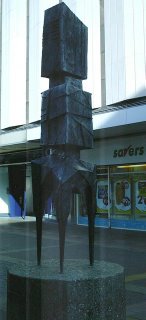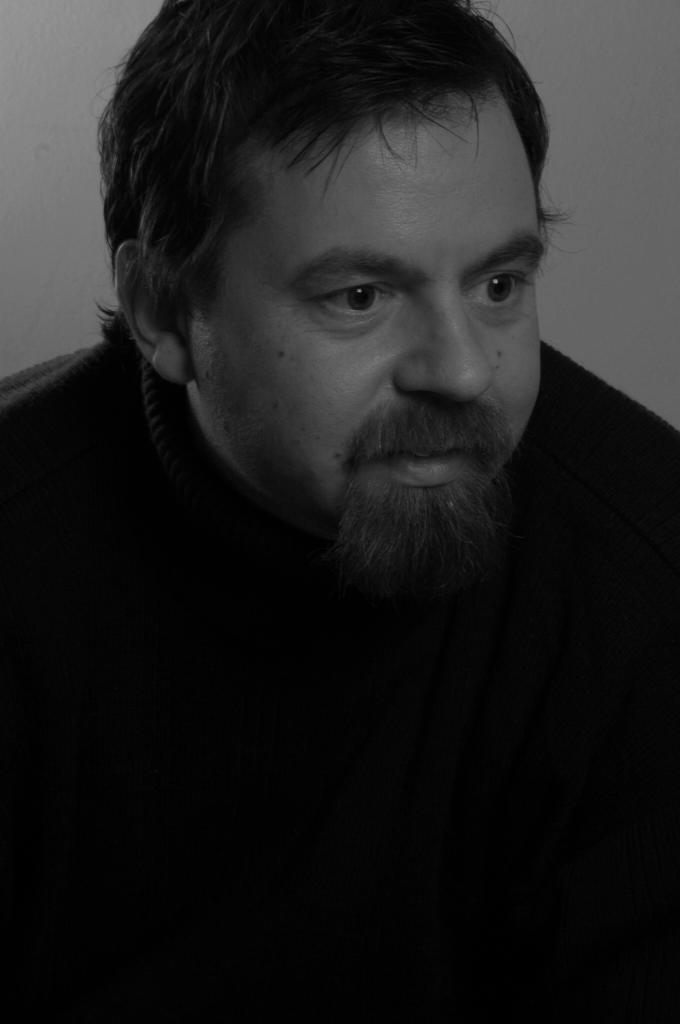The first picture shows the Adam clock overlooking the market place in the Festival of Britain style town centre. The town centre was rather characterised by empty shops, with a considerable number in one block alone. Apparently there are faults with construction of some of the buildings which has led to demolition of some of the town centre buildings and it may be that this block is due for demolition also, although I would have thought a town of 90000 people could support a full town centre of shops. There are a few large hypermarkets on the edge which may explain the lack.

Public art is prominent, and the final pictures show some of the public sculptures. Harlow has the largest collection of public sculpture for any town its size. The first is in the market place and is called ‘Meatporters’ by the sculptor Ralph Brown. It shows two porters carrying an eviscerated pig, which is appropriate for a meat and food market.
The second photograph shows a sculpture called ‘Trigon’ by the sculptor Lynn Chadwick outside the former Woolworth (although it is not a good sign that Woolworth has left).
Public art gives a sense of place and shows that the cultural needs of the townspeople are not neglected nor are they thought of as philistines.





1 comment:
Amazing places
Post a Comment